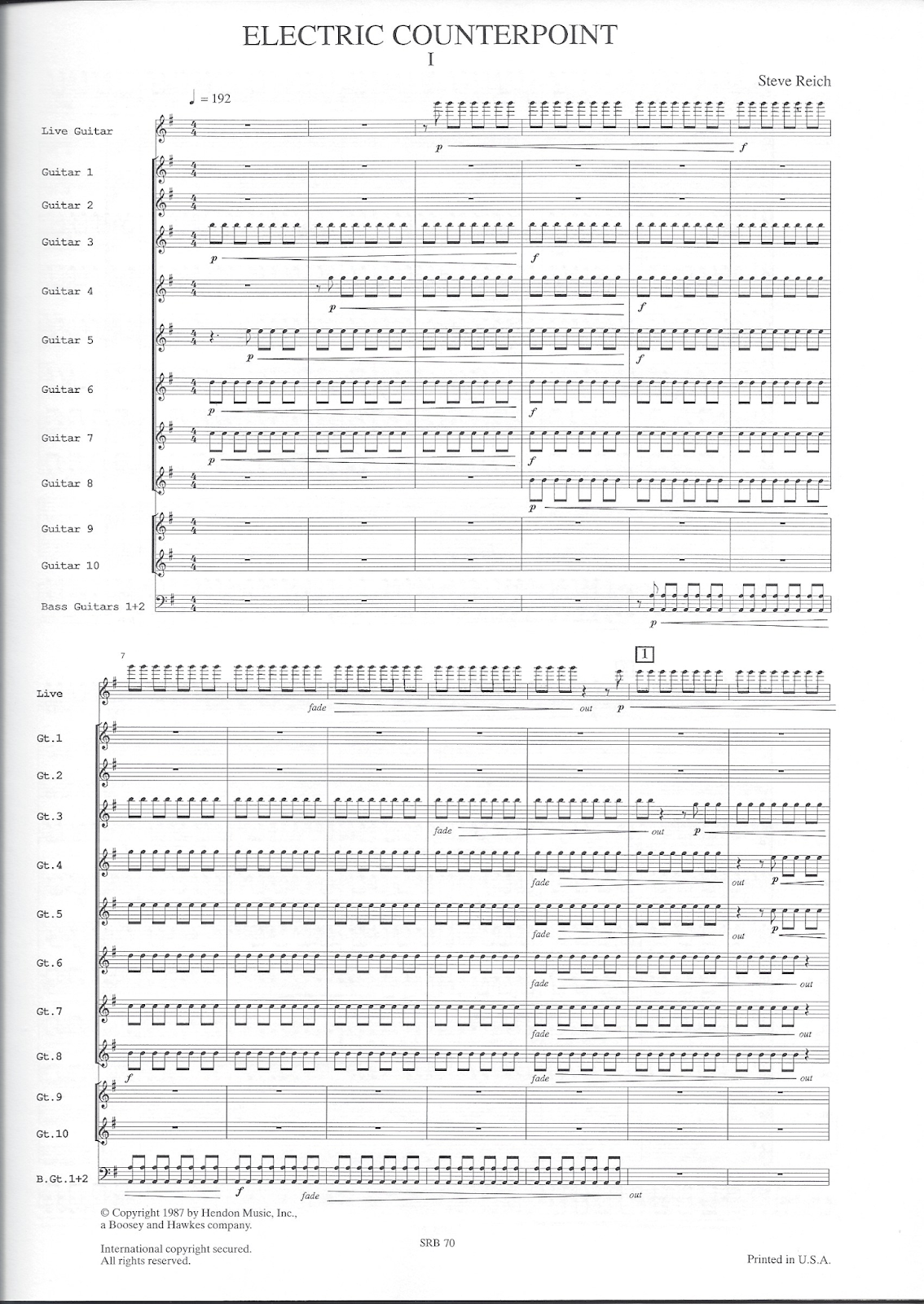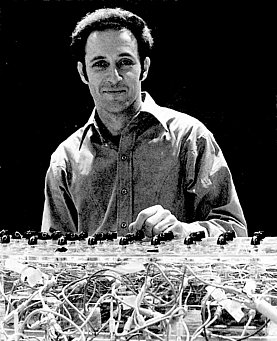Reich Different Trains Electric Counterpoint Rar
Steve Reich - Different Trains/Electric Counterpoint review: The girl still sings. Listen to Different Trains / Electric Counterpoint on Spotify. Steve Reich Album 1990 6 songs.
Реферат на тему:
Reich Different Trains Electric Counterpoint Rar 2
План:
- Введение
- 1Произведения Литература
Примечания



Введение
Стивен Майкл Райх (англ. Stephen Michael Reich; род. 3 октября 1936, Нью-Йорк) — американский композитор, один из первых авторов музыки в стиле минимализм. В раннем творчестве Райха присутвствовало много экспериментов, например зацикливание музыки при помощи кассет (например, в композициях «It’s Gonna Rain» или «Come Out»). Такие композиции по своей форме и ритму были новы для своего времени и сильно повлияли на современную музыку, особенно в США.
20 апреля 2009 Райх получил Пулитцеровскую премию за альбом Double Sextet [1].
Reich Different Trains Electric Counterpoint Rar Converter
1. Произведения
|
|
Reich Different Trains Electric Counterpoint Rar Files
Литература

- Potter, Keith (2000). Four Musical Minimalists: La Monte Young, Terry Riley, Steve Reich, Philip Glass. Music in the Twentieth Century series. Cambridge, UK; New York, New York: Cambridge University Press.
- Reich Steve Writings on Music, 1965-2000. — USA: Oxford University Press. — P. 272. — ISBN ISBN 0-19-511171-0
- Reich Steve Writings About Music. — Halifax: Press of the Nova Scotia College of Art and Design. — P. 78. — ISBN ISBN 0-919616-02-X
Примечания
Reich Different Trains Electric Counterpoint Rar 1
- The Pulitzer Prizes | Citation - www.pulitzer.org/citation/2009-Music
- Steve-Reich-Homepage - www.stevereich.com/concerts.html
Reich Different Trains Electric Counterpoint Rar Free
Kronos Quartet
Pat Metheny: guitar
Lossless: Ape (img + cue + log) = 210 mb
Lossy: Mp3 (lame 'preset standard') = 58 mb
Artwork @ 300dpi = 20 mb
Total playing time: 41:35
Recorded:
DIFFERENT TRAINS
August 31 - September 9, 1988
Russian Hill Recording, San Francisco
ELECTRIC COUNTERPOINT
September 26 - October 1, 1987
Power Station, New York City
Released: 1989, Elektra/Nonesuch 7559-79176-2
Track listing:
DIFFERENT TRAINS
1. America - Before the War
2. Europe - During the War
3. After the War
ELECTRIC COUNTERPOINT
4. Fast
5. Slow
6. Fast
Reviews:
Amazon ('essential recording')
Different Trains (1988) will probably go down in history as Reich's masterpiece. And deservedly so. Reich's phase-shifting minimalism is made dazzlingly entertaining in Different Trains, which is scored for string quartet and digitally sampled voices that repeat bits of speech concerning trains and Reich's experience with them growing up. The sinister part here is than some trains carried Jews to death camps. That's here as well. The Kronos Quartet has also never sounded better. Electric Counterpoint (1987) has one guitar--Pat Metheny in this case-- playing to 10 pre-recorded motifs, also on guitar. You absolutely need this.
Allmusic
This late-'80s work finds the minimalist composer mixing acoustic and taped material to great effect. The disc's centerpiece is 'Different Trains', a work that frames Reich's impressions of his boyhood train trips between his mother in Los Angeles and his father in New York; Reich also intersperses references to the much more harrowing train rides Jews were forced to take to Nazi concentration camps. Using the fine playing of the Kronos Quartet as a base, Reich layers the work with the taped train musings of his governess, a retired Pullman porter, and various Holocaust survivors -- vintage train sounds from the '30s and '40s add to the riveting arrangement. And for some nice contrast, Reich recruits guitarist Pat Metheny to create a similarly momentous piece in 'Electric Counterpoint' (Metheny plays live over a multi-tracked tape of ten guitars and two electric basses). Two fine works by Reich in his prime.
About the compositions:
Different Trains (1988) is perhaps Steve Reich's best-known work, and it is certainly his most powerful. The impetus for the piece lay in Reich's observation that, though he spent the first years of World War II being shuttled between divorced parents in New York and Los Angeles, if he had been in Europe, he would as a Jew have been riding trains to concentration camps. Two distinct sonic entities--taped phrases (from conversations with the nanny who accompanied Reich on his childhood trips, an American railroad worker from the war years, and archival recordings of holocaust survivors) and a string quartet--interact in a striking combination of pathos and psychic distance.
The string quartet prefigures the pitches and rhythms of each spoken phrase in an manner similar to that in Stravinsky's Symphony of Psalms, in which the winds play the distinctive rhythms of the text before it is sung by the choir. This abstraction of speech into purely musical components represented a new and apparently stimulating stylistic development for Reich, who explored it further in text-based works like The Cave (1994) and City Life (1995). The emotional impact of Different Trains is heightened by sound effects that evoke the era of World War II--most memorably, train whistles which become more ominous as the piece progresses from America to Europe--and by the manipulation of the text, which skillfully points up the ambiguity of the work's central theme. Reich eschews overt drama throughout, increasing the emotional impact by allowing the facts of the Holocaust, and the persecution that preceded it, to speak for themselves.
---
Steve Reich's Electric Counterpoint (1987) belongs to a group of the composer's works (including Vermont Counterpoint [1982] and New York Counterpoint [1985]) which call for a soloist to play along with a recording of him- or herself. Written for noted jazz guitarist Pat Metheny, Electric Counterpoint requires the player to pre-record up to ten electric guitar tracks and two electric bass tracks; the player performs the eleventh part live against the tape. This configuration creates an interesting aural effect; the ethereal homogeneity of ten timbrally identical electric guitars simultaneously playing different figures is immediately quite striking.
Electric Counterpoint is in three movements, labeled simply 'Fast,' 'Slow,' and 'Fast.' The first begins with a stream of rapidly repeated chords that gradually fade in and out of audibility, subtly changing harmony at the quietest moments. After the harmonic outline of the piece has been presented, one guitar enters with a new theme, which seven other guitars reiterate one by one in canonic fashion. The remaining two guitars, along with the two basses, supply harmonic support. The second movement similarly builds up canonically, this time employing a slower, plaintive theme. While the third movement recalls the tempo of the first, it stresses rhythmic variety in its frequent metric shifts. The basses drive this effort, dividing the ambiguous twelve-beat textures of the guitars first into three groups of four, then four groups of three -- a familiar feature in Reich's music ever since Clapping Music (1972) and Music for Pieces of Wood (1973). These metric shifts are accompanied by complementary shifts in harmony. The changes in the final movement occur at shorter and shorter intervals until the basses fade out and the guitars reach a final harmonic and rhythmic acquiescence.
Click here to download